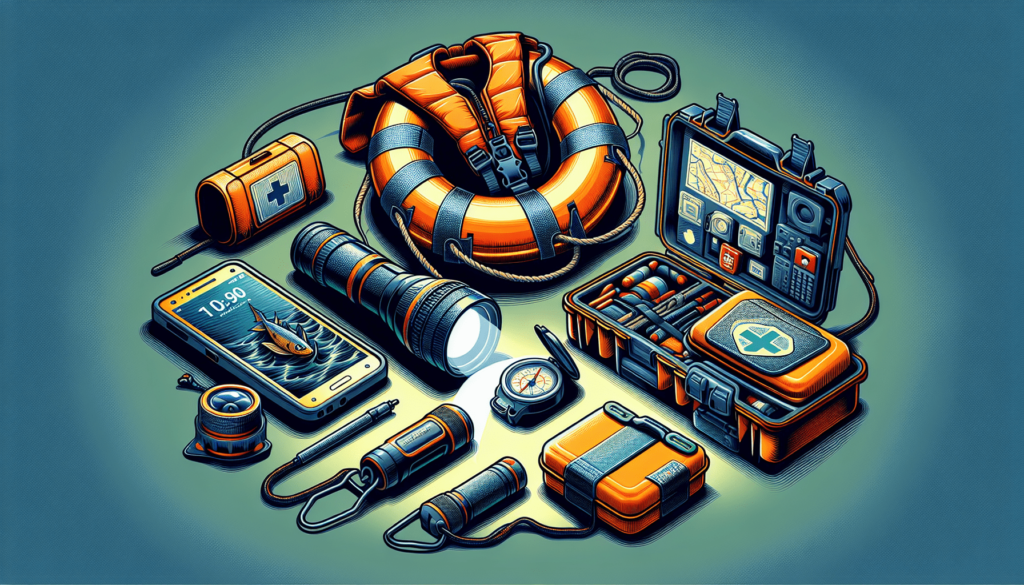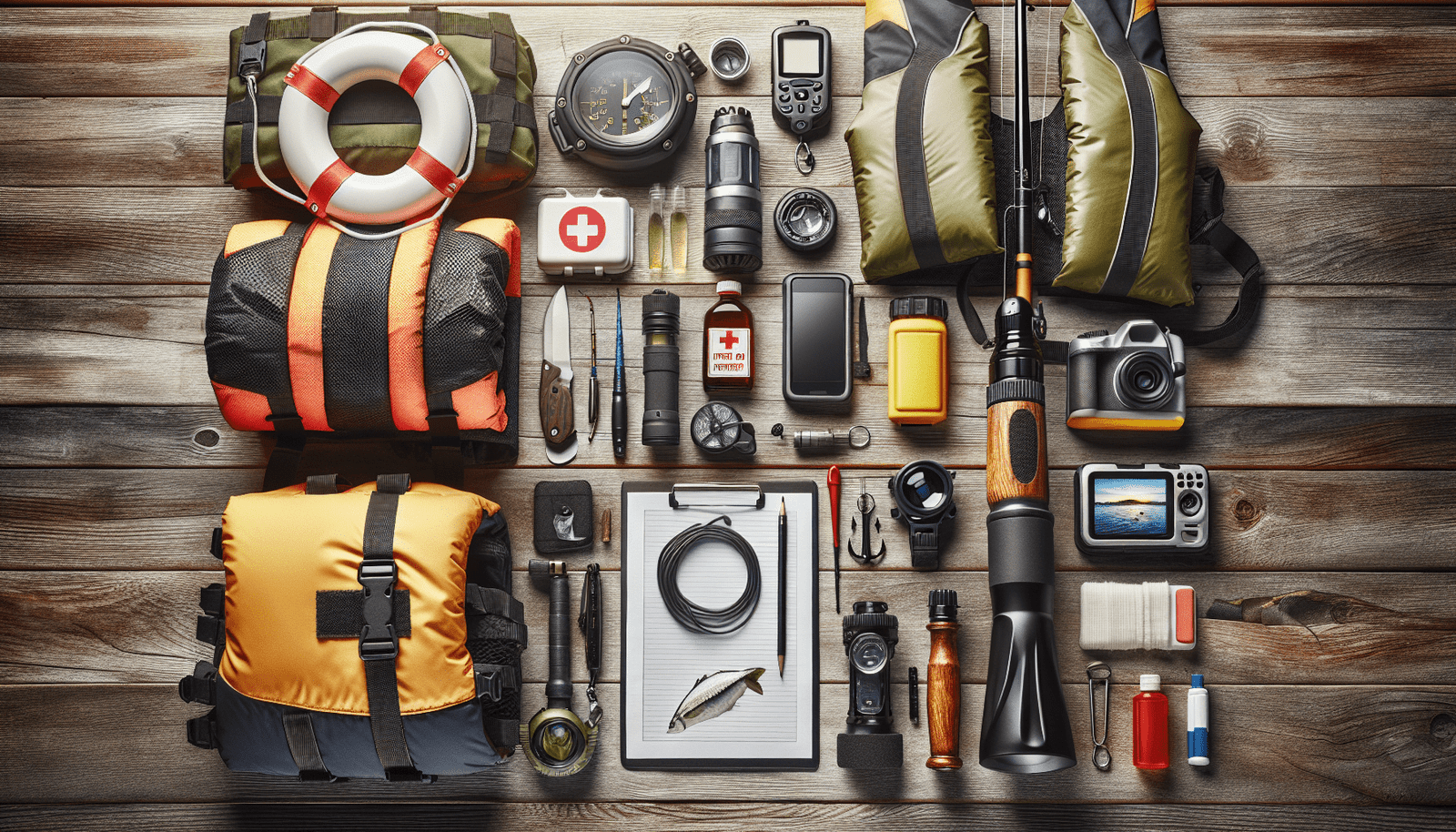Embarking on a fishing expedition is an adventure that blends the tranquility of nature with the thrill of the catch. However, ensuring your safety is paramount to making the experience enjoyable and worry-free. The “Safety Equipment Checklist for Fishing Trips” is your go-to guide for preparing the essential gear that safeguards your well-being while you’re casting lines and reeling in those memorable catches. This comprehensive checklist covers everything from life jackets to first aid kits, making sure you’re equipped to handle anything the waters might throw your way. When planning your next fishing trip, it’s essential to ensure you’re well-prepared for both safety and comfort. This comprehensive guide covers all the critical aspects, from selecting the right personal flotation devices to packing the appropriate weather-appropriate clothing and ensuring you have the right tools for emergencies. By following this safety equipment checklist, you can focus on enjoying your fishing adventure with peace of mind.

Personal Flotation Devices (PFDs)
Safety on the water begins with the proper use of Personal Flotation Devices (PFDs). These are vital for keeping you afloat in the event of an unexpected fall into the water.
Types of PFDs suitable for fishing
For fishing, opt for Type III PFDs designed for quick rescues, as they allow for greater mobility. Inflatable PFDs are also suitable for fishing due to their lightweight and comfort.
Ensuring proper fit for adults and children
It’s crucial that PFDs fit correctly. Adults should test their PFD in shallow water to ensure it does not ride up and fits snugly. For children, proper fit means choosing a PFD appropriate for the child’s weight and testing it in the same way.
Maintenance and inspection routines
Regularly inspect your PFDs for rips, tears, and functionality of the buckles and zippers. Ensure it’s always dry before storage to prevent mold and mildew.
Legal requirements for carrying PFDs onboard
Most regions require a PFD on board for every person in a boat. Ensure you’re familiar with and adhere to local laws regarding PFDs.
First Aid Kit
A well-stocked first aid kit is an essential component of any fishing trip to handle minor injuries or illnesses.
Essential contents of a fishing trip first aid kit
Your kit should include band-aids, antiseptic wipes, gauze pads, adhesive tape, scissors, tweezers, pain relievers, and allergy medication. Consider including motion sickness tablets if you’re fishing in open waters.
How to use common items in the kit
Familiarize yourself with each item in your first aid kit. Learn how to clean a wound with antiseptic wipes and apply bandages correctly to cover injuries.
Storing and maintaining the first aid kit
Keep your first aid kit in a waterproof container and check its contents regularly, replacing any used or expired items.
Additional items for specific medical conditions
If you or any member of your group has specific medical conditions, such as diabetes or allergies, ensure to include necessary medications like insulin or epinephrine auto-injectors.
Effective communication can be lifesaving in emergencies. Having the right devices can ensure you get help when needed.
Types of devices: VHF radios, cellphones, and emergency beacons
VHF radios are reliable for communication on the water, while cellphones can be useful near shore. Emergency beacons are essential for remote locations.
Ensuring devices are waterproof or stored properly
Store your communication devices in waterproof bags or cases to protect them from getting wet.
Key emergency contacts to have programmed
Have emergency numbers, including local water patrols and the coast guard, saved in your devices.
Testing and charging before the trip
Ensure all your devices are fully charged and test them before leaving for your trip.
Navigation Tools
Navigating waterways safely requires the right tools and knowledge.
Paper vs. digital maps and charts
Always bring along paper maps and charts as backups, even if you prefer digital versions for their convenience and detail.
Using a compass or GPS device
Learn how to use a compass and a GPS device. While GPS devices are convenient, knowing how to navigate with a compass is invaluable if your electronic devices fail.
Importance of understanding local waterways
Familiarize yourself with the local waterways, including any hazards or no-go areas, to avoid getting lost or running aground.
Backup navigation options
Have backup navigation options like a spare compass or portable GPS device in case your primary navigation tools fail.

Weather-Appropriate Clothing
Being properly dressed can make or break your fishing trip, especially in challenging weather conditions.
Layering for cold weather fishing
Layer your clothing to stay warm in cold weather, starting with a moisture-wicking base layer, an insulating middle layer, and a waterproof outer layer.
Breathable wear for warm-weather fishing
In warm weather, opt for breathable, light-colored clothing that reflects sunlight. Moisture-wicking fabrics can help keep you cool.
Waterproof gear for all types of weather
No matter the weather, having waterproof gear, including jackets and pants, is essential to keep you dry and comfortable.
Sun protection: hats, sunglasses, and sunblock
Protect yourself from harmful UV rays with a wide-brimmed hat, UV-blocking sunglasses, and sunscreen with high SPF.
Lighting and Signaling Equipment
Having the right lighting and signaling equipment can ensure your visibility and ability to signal for help if necessary.
Flashlights and headlamps
Bring along durable, waterproof flashlights or headlamps for use in low-light conditions or at night.
Flares and signaling mirrors
Flares can signal for help during emergencies, while signaling mirrors can be used during the day to attract the attention of nearby boats or aircraft.
Glow sticks for night fishing
Glow sticks can be used as markers or for personal lighting during night fishing trips.
Battery or solar-powered lights
Consider battery or solar-powered lights as sustainable options that can provide illumination without the need for disposable batteries.
Emergency Shelter
Being prepared with an emergency shelter can provide critical protection in unexpected conditions.
Types of portable shelters
Lightweight tents, tarps, and bivy sacks are good options for portable emergency shelters that can protect you from the elements.
Using a tarpaulin or bivy sack for emergency situations
Learn how to set up a tarpaulin for quick shelter, and consider a bivy sack for a lightweight, compact emergency shelter option.
Compact and lightweight options
Choose compact and lightweight shelter options that won’t add unnecessary weight to your gear but provide adequate protection.
Setting up a makeshift shelter
Practice setting up your makeshift shelter before your trip to ensure you can do it quickly and effectively in an emergency.
Fire Starting Tools
The ability to start a fire can be crucial for warmth, cooking, and signaling for help.
Waterproof matches and lighters
Pack waterproof matches and lighters to ensure you can start a fire even in wet conditions.
Fire starters and tinder
Bring along fire starters and tinder, such as dry lint or commercial tinder, to help ignite a fire quickly.
Safety precautions for starting a fire
Always be mindful of your surroundings and local regulations. Ensure the fire is fully extinguished before leaving the area.
Practicing fire-making skills before the trip
Practice making fires in a safe environment to ensure you’re prepared to do so in an emergency.
Food and Water Supplies
Maintaining adequate hydration and energy levels is essential during any fishing trip.
Packing non-perishable food items
Pack non-perishable food items such as canned goods, nuts, and dried fruits that can provide energy and nutrients.
Ensuring a sufficient supply of drinking water
Carry enough drinking water for the duration of your trip, and consider packing a portable water filter or purification tablets as a backup.
Portable water filters or purification tablets
Portable water filters and purification tablets can provide access to clean drinking water from natural sources in emergencies.
Energy bars and ready-to-eat meals
Energy bars and ready-to-eat meals are convenient options that provide quick nutrition without the need for preparation.
Environmental Awareness and Conservation
Respecting the environment and practicing conservation are critical aspects of responsible fishing.
Understanding local fishing regulations
Familiarize yourself with local fishing regulations, including catch limits and size restrictions, to ensure sustainable fishing practices.
Practicing catch and release responsibly
If practicing catch and release, handle fish carefully and release them promptly to minimize stress and injury to the fish.
Minimizing environmental impact
Carry out all trash, use eco-friendly products, and avoid disturbing local wildlife to minimize your impact on the environment.
Proper disposal of waste and respecting wildlife
Dispose of waste properly and maintain a respectful distance from wildlife to protect natural habitats and ensure the health and safety of wildlife populations.
By adhering to this safety equipment checklist for fishing trips, you equip yourself with the knowledge and tools necessary to enjoy a safe and successful outing. Always prioritize safety, respect the environment, and enjoy the beautiful experience of fishing responsibly.


